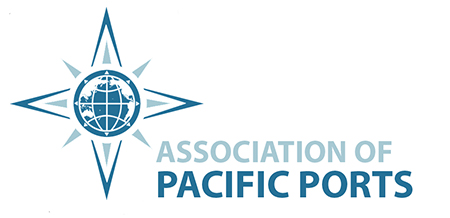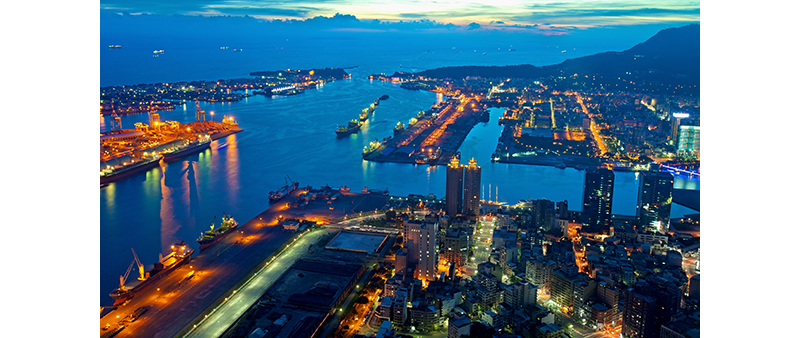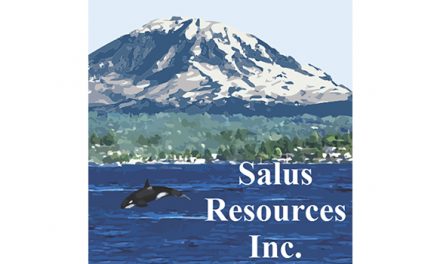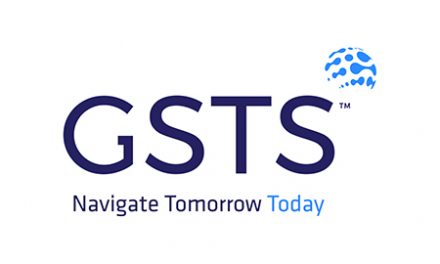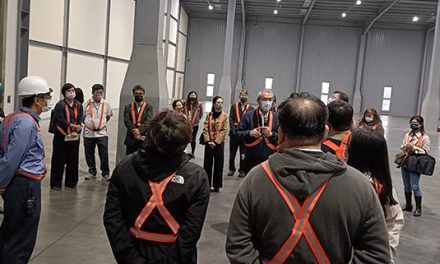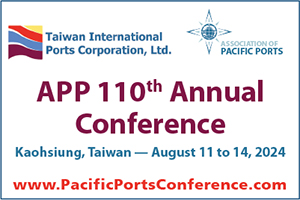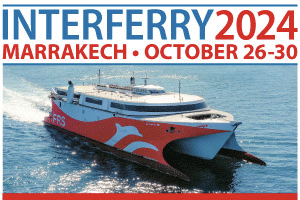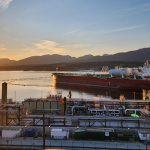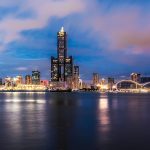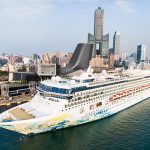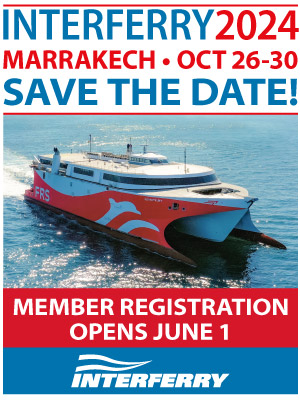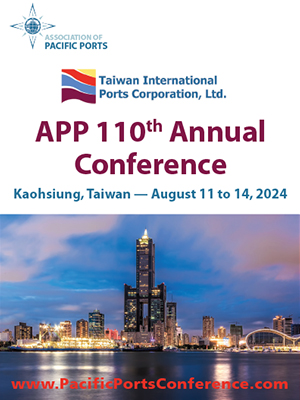August 2020 — With four APP Member Ports under its purview — the Ports of Kaohsing, Keelung, Hualien, and Taichung —Taiwan International Ports Corporation (TIPC) has provided a full overview of operations as follows:
The global economy continued to grow in 2019 with an economic growth rate of 2.4 per cent while Taiwan’s growth was 3.38 per cent. Factors that affected the global economy in 2019, such as protectionism in the United States that raised trade policy uncertainty, Brexit, and crude oil price fluctuations, also influenced Taiwan’s economy. In the future, TIPC will make efforts to strengthen our competitiveness through the multi-operations of our ports as well as business innovations.
Looking at our operating performance in 2019, the number of inbound vessels reached 39,215, container throughput volume reached 15.3 million TEUs, and the number of incoming and outgoing passengers reached 1.5 million.
At the start of 2020, the global economy was hit hard by COVID-19 and the economic growth rate was revised to be minus 3 per cent while Taiwan was revised to 1.59 per cent. While the pandemic caused a global market shutdown, unemployment, and unknown market recovery schedule, we will continue to assist with maritime market recovery and get through the difficulties together with the industry.
Carriers have set out capacity cuts for this period including blanked sailings due to lower demand caused by the COVID-19 pandemic. Ship calls and total freight volume handled by Port of Kaohsiung fell during the first five months of 2020. Although import and export container volumes still maintained a level, transshipment and empty container volumes declined significantly, having been affected by blanked sailings.
To prevent further infection of COVID-19, the Taiwan government took immediate action to ban all international cruise ships calling at ports of Taiwan since February 6, 2020. TIPC has been making every effort to stop new cases of this dangerous virus at the border through vigorous checks of inbound ship passengers and crew. Furthermore, the emergency response team established by TIPC on January 23 has been tasked with coordinating response measures to any outbreak of serious pneumonia symptoms at one or more of Taiwan ports.
Concerning the health of commercial vessel crews, TIPC’s VTS assistance service transmits hourly information on virus prevention in both Chinese and English to shipboard AIS transceivers, and TIPC asks each ship to radio in any reports of health issues on board. Moreover, shipping agents are reminded during daily berth assignment briefings to regularly encourage vessel crew to self-report abnormal health symptoms and to maintain consistently high levels of health management.
Upon arrival in port, every captain must submit a signed maritime declaration of health to their agent for forwarding to Taiwan Centers for Disease Control (TCDC). All issues of health-related discomfort among the crew included in this or other documents are forwarded by shipping agents to TCDC.
TIPC has stressed that the danger of this coronavirus outbreak is to be fought as diligently as any preventive war and stands on the front lines to bring the latest and most effective techniques to the fight. In addition to TIPC’s emergency response team keeping close tabs on arriving passengers and crew at all of Taiwan’s international commercial ports, senior officials at each TIPC subsidiary company have stepped up supervision of frontline staff to ensure the highest standards of virus prevention and control and to prevent new cases of this and other viruses from arriving in Taiwan by sea.
Activity update
Container Terminal No. 7 Project — Kaohsiung Port had hit 10 million TEU handling records six years in a row. This is already approaching the total capacity for all of Kaohsiung Port’s container terminals. And we estimate the current capacity will not be enough to accommodate the throughput in the short future. As an operating entity of Taiwan’s international ports, we must always prepare for the coming decades to maintain the competitiveness of the Port. So, several years ago we started the Container Terminal No. 7 Project (CT7).
The CT7 project includes five berths with a total length of 2,415 meters and with a water depth of 18 meters that can accommodate five 23,000-TEU+ vessels. Upon completion, it will be capable of handling five million TEU per year and will be the largest container terminal project ever in Taiwan.
Moreover, TIPC has announced major progress on the reshuffle of Kaohsiung Port’s terminals. In 2018, TIPC first signed a lease agreement with Evergreen Marine Corp. for wharves S1-S5, which will be the Port of Kaohsiung’s Container Terminal No.7. Upon completion of the Terminal No.7 in 2022 and 2023, EMC will return its current Terminal No.5 (berth No. 79~81) and Terminal No.4 (berth No. 115~117) respectively and shift to the new reclaimed Terminal which will enable them to double in the hinterland. This is defined by TIPC as the first step of Port of Kaohsiung’s container terminals’ relocation.
The second step is now unveiled. Another Taiwanese national carrier Wanhai will move from its current Terminal No.2 to EMC’s Terminal No.5 in 2022.
Negotiations were finalized with Wanhai regarding terminal re-location in Kaohsiung Port. After Evergreen returns its current terminal No.5 and moves to terminal No.7, Wanhai will take terminal No.5 and return its terminal 2 (Berth No. 63~64). A lease agreement will be signed shortly. TIPC added terminals relocation will continue including negotiating with interested carriers to take over Wanhai’s Terminal No.2 and further consolidating operators in Port of Kaohsiung. TIPC estimates the first and second step together will add more than 1.5 million TEU of annual throughput to the Port.
Green Energy for Port Area-Offshore Wind Power — the Taiwan government has announced the policy of “non-nuclear homeland” and aims to install 5.5 gigawatts (the allocated capacity has now reached 5.73GW) of offshore wind capacity to replace nuclear power by 2025. Taichung Port is the closest international commercial port to these potential wind farms with complete infrastructure, sufficient channels, and draft and space for back-end operation. All of these not only facilitate the transportation and installation of large components of offshore wind turbines, but also satisfy the operating needs of installation work, installation ships, and transportation maintenance ships. Therefore, the Port of Taichung is accredited as the best base for the development of offshore wind power by both the government and industry.
In support of the national offshore wind-power initiative, TIPC will renovate or construct a new wharf and support facilities at Wharf Nos. 2, 5A, 5B, 36, and 106. These wharves and facilities will be available for private firms to use in wind-turbine production, storage, assembly, and transport. A statement by the Port of Taichung notes that related renovation work on Wharf No. 2 was completed in 2019 and that this wharf was used to support installation of new wind turbines in the Formosa I Offshore Demonstration Wind Farm zone. And this year, Wharf No. 2, #5A and #5B will support Formosa II, TPC Phase 1 and Yunlin Offshore Wind Farm respectively. Wharf No. 106 was completed in April 2020 and Wharf No. 36 will be finished in 2020. On top of that, TIPC provides an industry zone covering 107.3 hectares of land dedicated to the localization of wind turbine manufacturing. TIPC will construct roads along with other public facilities of the said industry zone. Companies of the related industry like Yeongguan, Tien-Li, Tai-shing, Siemens Gamesa, and Hua-Cheng will invest and build plants in this industry zone for the production and assembly of wind power parts, driving the localization of wind turbine manufacturing.
TIPC also plans to provide offshore wind power operation and maintenance services with its current personnel, tugboat, crane vessel, shipyards, and warehouses, basins for work ships and light-draft ships, CTV and barge. TIPC aims to make Taichung Port a homeport for offshore wind power operations.
TIPC invited Taiwan Power Company (TPC), CWind Taiwan, China Steel Corporation (CSC), China Ship Building Corporation (CSBC), and Swancor Renewable Energy Co. (Swancor) to develop a Joint Venture company to set up a GWO training center in Taichung Port. Taiwan International Windpower Training Corporation (TIWTC) was founded in May 2018 with the goal of providing related training. TIWTC has acquired a Training Provider certificate of GWO BTT and GWO BST courses. BTT includes three modules: Mechanical, Electrical, and Hydraulics. BST includes Working at Heights, Sea Survival, First Aid, Fire Awareness, and Manual Handling. And the construction of the training facility of the new center was completed in September 2019. More than 300 people have completed the training so far and the courses have received excellent acknowledgment from participants. TIWTC will continue to provide GWO-related courses and at the same time design new, customized courses catering to the needs of the offshore wind industry.
2019 throughput
Port of Keelung — The container throughput of Keelung Port was 1,455,293.0 TEU in 2019, with a YoY drop of 1.13 per cent.
Port of Taipei — The container throughput of the Taipei Port in 2019 was 1,620,391.75 TEU, a 2.39 per cent decrease compared with 2018.
Port of Taichung — Taichung’s throughput in 2019 was 1,793,965.5 TEU, a 2.86 per cent increase compared with 2018.
Port of Kaohsiung — The container throughput of the Port of Kaohsiung in 2019 was 10,428,634.25 TEU, a 0.2 per cent decrease compared with 2018.
Additional areas of focus
Environmental sustainability — TIPC has been promoting green port activities through a series of actions. All seven of our international ports have been Eco-Port certified and we also work on sustainability projects. For example, TIPC set up solar photovoltaic equipment in idle space on the roof of the port office and warehouse. As of 2019, a total of 66,191 square meters of solar photovoltaic equipment have been installed, generating about 11,000,975 (kwp) annual power and reducing carbon emissions by 5,819 metric tons (equivalent to 390.4 hectares of forest area.)
In addition to solar photovoltaic equipment, each port builds various water resource recovery facilities according to the characteristics of different ports. The annual amount of water recovered is about 16,000-17,000 degrees, and the carbon reduction is about 2.6 metric tons. Recycled water is used in car washing facilities, dust suppression during loading and unloading operations, ground, and toilet sanitation cleaning, etc., effectively reducing water consumption and carbon emissions.
In cooperation with the government to promote the use of green energy, TIPC is gradually changing the lighting to energy-saving lamps in the port area and installing solar and wind power circuit lights in parts of Kaohsiung Port. In addition, TIPC continues to advocate the replacement of obsolete equipment with high-efficiency green energy-saving equipment.
Currently, TIPC is working with the Environmental Protection Administration (EPA) to tackle air quality issues, which is one of the most concerning environmental problems in Taiwan these days. Knowing that ocean-going vessels (OGVs) emit more than 90 per cent of the ports’ air pollution, TIPC proposed three emission reduction strategies: vessel speed reduction (VSR), shore power, and low sulfur diesel. TIPC has been pushing for VSR in Taiwan since 2013. In 2019, the national VSR achievement rate reached an average of 49.6 per cent, an increase of 2.7 per cent compared to 2018.
Priorities for the coming year(s)
Safety, efficiency, and sustainable development are three fundamentals for port operations yet, while facing the challenges and severe competitiveness in today’s maritime market, finding diversified business opportunities and new value to our services via new technology trends are certainly two important tasks we need to focus on.
TIPC is devoted to promoting the diversified development of port business. In terms of the travel business, TIPC cooperates with the cruise industry and local government to optimize port and travel facilities to provide a convenient customs clearance environment, and also to endeavor to develop cruise tourism and waterfront space.
TIPC will be continuously expanding its scope of business and creating new values for ports by developing diversified businesses such as establishing a wind-power training center to cultivate local wind-power talents, and investing in the Southeast Asia market in response to the New Southbound Policy.
Therefore, besides the scheduled infrastructure upgrading and green port policy, TIPC also initiated the Trans-SMART Plan (Transform Sustainable, Modern and Advanced ports with Revolutionary Technology), through which we invest in port and terminal operations to develop innovative technology that will optimize transportation safety and efficiency, and enhance the competitiveness of Taiwan’s port group.
